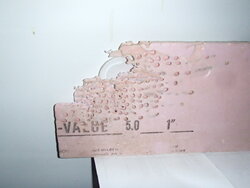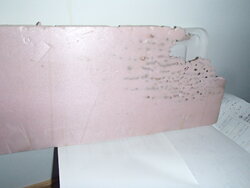I live in the woods and carpenter ants are an ongoing battle. I use the Max Force squeeze baits that have Fipronil as the active ingredient in areas where they have been in the past and it seems to work pretty well. I was late in applying bait this year and noticed some ant activity so I took a good look around the house. My minisplit has been installed for close to ten years with a flexible drain pipe down to the ground. Over the years the end has been covered with grass and a bit of dirt. Yesterday I noticed ants going up and down the outside of the tubing. The tubing runs into the PVC chase that hides my tubing and control wiring and eventually heads up the wall and then goes through the wall. When I pulled the tube I could see it mostly plugged with dirt but an obvious tunnel running through it. I got out my bait and applied in a few spots. its usually takes a few days for the workers to haul it into the colony and kill it so I will keep an eye on this area.
The bizarre thing with carpenter ants is they sometimes nest quite a far away from the ground. I have found nests in the deck between my first and second floor in an area that was not moist or damp. It was obvious that they just picked a spot where they couldn't be disturbed.
The bizarre thing with carpenter ants is they sometimes nest quite a far away from the ground. I have found nests in the deck between my first and second floor in an area that was not moist or damp. It was obvious that they just picked a spot where they couldn't be disturbed.



